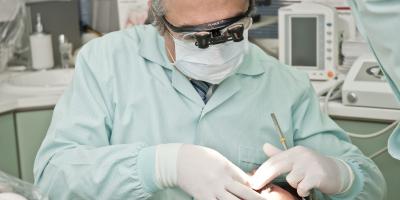As early as dozen-odd years ago, doctors were unable to help 70 percent of patients with tumors in the head and neck area. Thanks to reconstructive surgeries, this number dropped to 10-25 percent.
The Centre of Oncology in Gliwice is the Polish leader in the field of reconstructive surgery. This is where in 2013, the team of experts, led by Professor Adam Maciejewski, performed the first two face transplants in Poland.
The first one saved the life of a man who had an accident at work. The transplant was considered the best reconstruction of 2013 in the world according to the prestigious American Society for Reconstructive Microsurgery. The second patient was a young woman who has suffered from cancer since she was a child and the disease has dramatically changed her appearance.
Development of reconstructive surgery
Behind this success is the everyday work of the surgeons from Gliwice who reconstruct noses and jaws destroyed by cancer, and save hands and feet which are at risk of amputation.
Since 2001, the Center has conducted more than two thousand most complex treatments, using microvascular techniques that require a time-consuming procedure of connecting veins and arteries with a diameter of approximately 2 mm.
“The development of reconstructive surgery in our center has enabled the treatment of patients who previously could not get help," says Professor Maciejewski, Head of the Microvascular Reconstructive Surgery Team.
As he explains, in the past, no one would decide to perform a radical cancer surgery if it involved the removal of structures without which one cannot live.
“As lately as dozen-odd years ago, 70 percent of patients with tumors in the head and neck area had this problem, now it is only 10-25 percent, depending on the location and severity," he adds.
Most treatments are within the head and neck area
Surgeries of cancers within the head and neck area connected with the reconstruction of vital bodily structures account for 70-75 percent of all procedures performed by the team in Gliwice. The second group is breast reconstruction - 15-20 percent.
“The main purpose of these procedures is to ensure the basic functioning of patients, so that they could eat, swallow, speak, move, feel and see. The aesthetic effect is also important because it affects the daily functioning and social perception of these people," highlights Professor Maciejewski.
Almost all reconstructive procedures in the Gliwice hospital include the simultaneous removal of cancerous changes.
In most cases, patients’ tissues are the material of which the damaged part of the body is reconstructed. The team of Professor Maciejewski has reconstructed, inter alia, a tongue using material taken from the thigh; larynx - using rib cartilage. To rebuild the jaw, lower leg or hip fragments are used, and in the case of nose – the ear and the forearm.
Doctors also make use of titanium elements. “It is a great material – it is biologically neutral, extremely durable, it does not interfere with radiotherapy," explains Professor Maciejewski.
Complications after cardiac surgeries
In addition to cancer patients, the Gliwice surgeons also operate on patients with complications after cardiac surgery in co-operation with the Silesian Center for Heart Diseases in Zabrze since rib or sternum that do not heal after a surgery may cause severe difficulty with breathing or moving.
Long and costly rehabilitation after a reconstructive surgery is refunded by the National Health Fund (NFZ) only for 3 months. In this regard, the Foundation for the Development of Reconstructive Surgery and Face Transplants, established by medical reconstruction team in Gliwice, and registered in January 2014, supports the patients financially.









Comments (0)